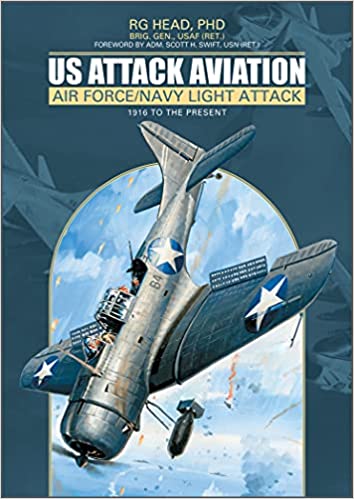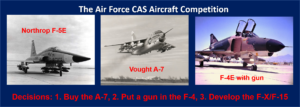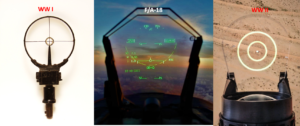Blown Slick Series #15
The “attack” mission combines the capabilities and objectives of air interdiction, close air support, strike, and what has come to be known as strategic attack.
“This is a story about flying. It is told by naval aviators, Air Force fighter pilots, and the men who built the airplanes they flew. All served our country with honor. This narrative on attack aviation is a part of our history, an important link from those who were the pioneers of early aviation. They invented ways to use the airplane, built it, maintained it, extended its range, and made it lethal against America’s adversaries. … This story is told using a wide sweep of history over a century, but with concentrations on several case studies that characterize the evolution, technology, and tactics of the time. … The heroes in these stories are the aircraft and the young men (and now women), warts and all, who debated, built, flew, and fought with these aircraft.
These are their stories and their history. We owe them our freedom.” RG Head
With publication this year, US Attack Aviation: Air Force and Navy Light Attack 1916 to the Present, RG Head has woven together a rich history of air warfare that tells an intriguing and I dare say, educational story that includes aspects little known or appreciated, perhaps even unknown history to many. There are key elements related to the Army and Close Air Support, the very early and continuing Air force drive to be an independent service leveraging as distinctive the strategic bombing mission, Navy and Marine culture driven by war at and from the sea, and differences in the way the business of air warfare, its technology, training and people have evolved; I.e., the evolution and continuation of multiple air combat cultures.
I must point out here; RG is a good friend and former co-worker. Given his knowledge of my Navy A-7 experience he asked me for support and I gladly began working with him in early 2020 in multiple ways including providing stories from the Midway 72-73 deployment to the Gulf of Tonkin and providing connections with other Navy “attack” types. It has been a rich learning experience, one of memories exchanged, and all-in-all, great fun. Based on his PhD thesis on the A-7 upgrade process that brought the AF in as a player, he is uniquely qualified….and he’s as close to a Navy Attack guy as you can get being a light blue suiter.
This is different kind of story than any I am aware of within the aviation genre. Note the title focus on not just aircraft or battles, or aviators but on ATTACK AVIATION – the whole mission environment – across services, with multiple story lines, perspectives, and threads. In total RG’s production is encyclopedic in scope, well researched and written with carefully selected detail.
It is of significant note that since its beginnings, air warfare has included four missions:
-
- observation/reconnaissance
- air superiority
- strategic bombardment
- attack.
While those missions have remained a constant, it can be argued that the attack side includes more variety of missions and distinct needs. Within the requirements > design/procurement > operational chain this need has been forced to include more operational threads, (armed reconnaissance, battlefield air interdiction, multi-plane “alpha strikes,” Ironhand, ship attack, and close air support), overlapped more with the other areas, required more debate, discussion, and trade-offs, and certainly created more controversy – subsonic vs supersonic, land or sea-based design drivers, close air support or deep strike, guns or missiles, multi-role fighters or specialized attack or fighter aircraft, etc.
The focus on that multi-dimensional attack segment of air combat history includes cultures, missions, machines, pilots, training, technologies, manufacturers, engineers, program managers, designers, testers, relevant inter service rivalries, service internal politics, government level actions and direction. Of particular note during a particularly critical technology development time frame of the 1960s, is the impact of the McNamara driven DOD Systems Analysis and SecDef’s drive for design of a “one size fits all” tactical aircraft (F-111???). So indeed, given the sheer number of requirements, studies, developments, and eventual trade-offs, the title of this book could just have readily been The Story of Tactical Air Combat Through the Perspective of the Attack Mission.
The pillars of the narrative are several case studies that characterize the advancement of technology and battle tactics over time: SBD Dauntless, AD Skyraider, A-4 Skyhawk, A-7 Corsair II, A-10 Thunderbolt II, F-16 Viper, F/A-18 Hornet, and F-35 Lightning II. Each of the cases contains first-person accounts that include a description of the aircraft’s origin, competitive procurement, major attack features, and combat employment.
RG begins with a chapter on the origins of ground attack in World War I, picking as his starting point, the Battle of Somme, where Brig Gen Trenchard ordered the entire British Royal Flying Corps to conduct ground strafing and bombing missions in support of the massive 1916 offensive. His final chapter,” Air Force/Navy/ Maine Corps Fighter and Strike aircraft 1980 to the F-35,” discusses the technology of fourth and fifth generation high tech, stealth, glass cockpit, multi-role attack/fighter aircraft – F-16, F/A-18, and the Joint Strike Fighter F-35 – and points to a possible future with continued development/evolution of unmanned air vehicles.
his starting point, the Battle of Somme, where Brig Gen Trenchard ordered the entire British Royal Flying Corps to conduct ground strafing and bombing missions in support of the massive 1916 offensive. His final chapter,” Air Force/Navy/ Maine Corps Fighter and Strike aircraft 1980 to the F-35,” discusses the technology of fourth and fifth generation high tech, stealth, glass cockpit, multi-role attack/fighter aircraft – F-16, F/A-18, and the Joint Strike Fighter F-35 – and points to a possible future with continued development/evolution of unmanned air vehicles.
In between bi-planes and stealth fighters, RG’s book can of course be viewed chronologically but given the scope of this endeavor along with the parallel threads between not only the services but how the technology evolved for application for different aircraft, it’s worth noting some of the multiple perspective threads and essential points that flow throughout the book:
- Why Navy and Air Force are so different
- Terminology based on AF fighters (Air-air and air-ground missions) and strategic level bombers and Navy definitions of fighter (air-air) and attack (air-ground)
- Early on service differences to approach for attack missions (for example WW II AF light bombers with level attack profiles vs Navy dive bombing)
- The 60s spawned multiple requirements and technical alternatives, some that only reached fruition much later (VAX program and A-10 for example)
- Early 60’s Navy VAL program and CAS needs (also demonstrated intersection of air-air vs air-ground mission requirements)
- AF entry into A-7 program drove many aspects. Studies contrasted A-7 with F-4s and F-5s
- In mid 60’s outside companies like Sperry or IBM, neither senior military or aircraft contractors had much of a picture (and therefore weren’t organizationally structured) in regard to computers and the impact on avionics, nor how the airframe and systems would intersect
- Everyone wanted multipurpose a/c, yet there was constant requirements for specialized a/c. View of subsonic vs supersonic was one piece, but even after top end requirements faded, speed was still a driver, particularly for AF
- CAS is a major thread throughout the book, gets different approaches from AF and Navy, and therefore as a result greatly impacts the telling of the overall attack mission story.
- Navy Air early on came to grips with CAS as part of the dive-bomber environment beyond attacking ships. This can be easily seen in the post WWII change from dive and torpedo a/c and squadrons to “attack” designation in 1947 with the A-1 Skyraider, move to adapt A-4 Skyhawk from a nuclear delivery platform to conventional attack, followed by the VAL requirement for a CAS a/c, the A-7A/B.
- The AF approach is more messy and continues to be problematic. Army land combat support was essential in the earliest days in WWI and continues to be a very dynamic dialogue between the Army and Air Force. Each service has a different view of where and how resources should be provided and then cannot agree on which service actually has control of those resources. In addition, from those early days the Air Force pushed for aircraft utilization that would support an independent service, I.e., the deep strike and strategic level of targeting.
Finally, those threads and the organization of the book can also be viewed from the perspective of three distinct and I think critical high level story threads.
- Chapter 1-3 – from 1916 to 1960 – how the aircraft, services and mission evolved from bi-planes to jets with nuclear delivery platform design and operational focus
- Chapters 4-9 – from 1961 and the desire to break from the cold war to conventional attack. This segment discusses a major sea change from “iron dive bombers” to dive bombers with significant computer driven avionics. A major element of the book and so discussed below
- Chapters 10-12 – the evolution to the strike fighter multi-role airplane and 5th generation a/c.
The middle thread provides a central point of the book. The focus first on the development of the A-7A followed by AF involvement and a major upgrade in avionics from analog to digital for both the A-7D and A-7E simultaneously can be seen as a major stake in the ground for the evolution of attack capabilities. Driven by the advocacy and teamwork of the Air Force and Navy Deputy Program Managers against the opposition of many in the Pentagon, realizing the impact of the A-7D design upgrade, the Navy followed closely in adapting their plans for the A-7E. This story mid point element can be viewed as opening up an historical backwards and forward look at not only the increase in operations capability provided but also the business and technology changes occurring that are still in play currently.
What should be recognized is the A-7A/B as the end of the line for pure, iron bomb dive bombers including most famously the Dauntless and the A-1 Skyraider, and the beginnings of the strike fighter technology (F-16, F/A-18, F-35) that was first demonstrated in the A-7D/E.
(A key point is found in Ch 8 related to lack of real understanding in key areas of the impact of avionics (heads up display, etc) and what would emerge in the following years. See thread comment #3 above)
Edifying chapters of the A-7 story include Navy’s combat employment of A-7A/Bs in Vietnam and participation of the A-7Ds and Es in Linebackers I and II. In the author’s words,
“ The A-7 story is expanded into several chapters because it explores the details of several of the controversies of attack aviation: Navy vs. Air Force differing requirements in the design of a common aircraft; Army / Air Force controversy over the close-air support mission; military service disagreements with the Office of the Secretary of Defense, especially Systems Analysis, in the McNamara administration; and internal Air Force disputes over multipurpose vs. specialized aircraft. “
The A-7D/Es represented the beginning of a new era of attack a/c – same airframe and aerodynamics but now a major improvement in the systems/avionics. I think it is not unreasonable to state that the F/A-18 and F-35 have at their core a technical and operational capability that is Corsair II D/E in design concept technically and philosophically – what we now characterize as “strike fighter.
Among the Air Force stories, is one of particular interest and detail—the influence of the “Fighter Mafia” in the design of the A-10 and F-16/F-17. With interviews with several of the principal players, the author tells an inside story of how the YF-16 and YF-17 began with a trivial $149K contract to the aerospace industry that produced multiple meetings in secret in a Pentagon motel. This was necessary to keep the design out of the view of senior leaders who considered any Light Weight Fighter a threat to their darling, expensive F-15! Of note, both the YF-16 and 17, begun as pure air-air fighter designs, came to life as multi-role aircraft.
This is a story about flying. It is told by Navy attack and strike fighter aviators, Air Force fighter pilots, and the men who built the airplanes the pilots flew. This book should be a mainstay of any library focused on combat from the air, whether you’re a true attack aviator (A-1, A-4, A-6, F-111, A-7, AV-8, F-117, A-10), or a multi-role pilot (F-105, F-4, F-16, F/A-18, F-35), or consider your self an air-air guy/gal (F-8, F-4, F-14, F-15, F-22), this book contains the story of why your aircraft and your missions are the way they are.
 Brig. Gen. RG Head, USAF (Ret.), was an Air Force fighter and attack pilot with 325 combat missions in the A-1 Skyraider. His military commendations include the Silver Star, the Distinguished Flying Cross, and 13 Air Medals. He has a PhD from Syracuse University, taught at the Air Force Academy, was an F-4 Instructor Pilot, Squadron Commander and Deputy Commander for Operations. He served in four policy positions in the Pentagon and overseas, and after retirement spent over 20 years in US space operations and systems/environmental engineering consulting with the US Navy.
Brig. Gen. RG Head, USAF (Ret.), was an Air Force fighter and attack pilot with 325 combat missions in the A-1 Skyraider. His military commendations include the Silver Star, the Distinguished Flying Cross, and 13 Air Medals. He has a PhD from Syracuse University, taught at the Air Force Academy, was an F-4 Instructor Pilot, Squadron Commander and Deputy Commander for Operations. He served in four policy positions in the Pentagon and overseas, and after retirement spent over 20 years in US space operations and systems/environmental engineering consulting with the US Navy.
The author gained first-person exposure to the policy and engineering aspects of the aircraft procurement process while writing his PhD dissertation on the Air Force/Navy A-7 Corsair II aircraft. This is his fifth book.








